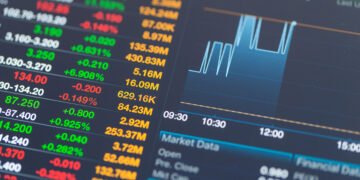The landscape of financial trading has undergone a dramatic transformation over the past decade, with artificial intelligence emerging as one of the most significant drivers of change. This evolution has been particularly pronounced in the cryptocurrency markets, where volatility and 24/7 trading cycles create unique challenges and opportunities for both human traders and algorithmic systems.
As AI technology continues to advance, numerous providers are making bold promises about their ability to deliver quicker judgments, smarter trading actions, and better management of market turbulence through sophisticated algorithmic systems. The appeal is undeniable: imagine algorithms that can monitor market sentiment, analyze complex charts, and execute trades instantly based on data-driven insights. Machine learning systems claim they can identify emerging trends before they become widely recognized, potentially giving traders a significant competitive advantage.
However, the reality of cryptocurrency trading is far more complex than these technological promises might suggest. While AI has indeed brought remarkable capabilities to financial markets, the unpredictable nature of cryptocurrency—particularly when human psychology and behavior are involved—means that no algorithm, regardless of its sophistication, can predict every market movement with certainty.
Can AI Actually Predict Cryptocurrency Prices?
The fundamental question facing traders and investors is whether artificial intelligence can genuinely forecast cryptocurrency price movements with reliable accuracy. The answer is both encouraging and sobering, depending on one’s expectations and understanding of AI limitations.
AI systems can indeed use algorithms and machine learning techniques to automate cryptocurrency trading decisions, including both buy and sell orders. These sophisticated computer systems operate without direct human assistance, applying predictive models that analyze vast amounts of historical data while monitoring current market patterns in real-time. The primary objective of these systems is to execute trades based on statistical probabilities while removing the emotional decision-making that often leads human traders astray.
The strength of AI in cryptocurrency trading lies in its ability to process and analyze information at speeds and scales that far exceed human capabilities. These systems can simultaneously monitor hundreds of data points, identify statistical patterns, and execute trades within milliseconds of identifying opportunities. They don’t suffer from fear, greed, or other emotional responses that frequently influence human trading decisions.
However, it’s crucial to understand that AI prediction systems are not infallible. They operate based on patterns identified in historical data and current market conditions, but they cannot account for unprecedented events, sudden regulatory changes, or the unpredictable nature of human behavior that often drives cryptocurrency markets. The success of AI trading systems depends heavily on market conditions remaining somewhat consistent with historical patterns.
How AI Cryptocurrency Prediction Tools Operate
Modern AI systems designed for cryptocurrency prediction rely on sophisticated data analysis techniques that process information from multiple sources simultaneously. These systems analyze large datasets that include historical price charts, blockchain activity data, social media sentiment, and various other market indicators.
The learning process for these AI models typically involves either supervised learning, where the system is trained on labeled historical data, or reinforcement learning, where the algorithm learns through trial and error by receiving feedback on its trading decisions. Through these methods, AI models develop the ability to identify trends and continuously modify their strategies in an attempt to forecast future price movements more accurately.
The operational framework of AI crypto prediction tools involves several key components:
Historical Data Analysis: Before being deployed in live trading environments, AI models undergo extensive testing using historical market data. This backtesting process allows developers to evaluate how well the system would have performed under various market conditions and helps identify potential weaknesses or areas for improvement.
Automated Strategy Management: Once deployed, AI systems can manage trading strategies and execute trades without human intervention. These systems are designed to respond to market changes within seconds, potentially capturing opportunities that human traders might miss due to slower reaction times.
Natural Language Processing: Many advanced AI trading systems incorporate natural language processing (NLP) capabilities to analyze news headlines, social media posts, tweets, and other text-based information that might influence market activity. This allows the system to factor in sentiment and news-driven events that could impact cryptocurrency prices.
Risk Management: AI systems can rapidly assess potential losses and evaluate market volatility with greater speed and accuracy than human traders. This capability allows for more precise risk management and can help prevent catastrophic losses during periods of extreme market turbulence.
Strategy Diversity: Depending on their design and objectives, AI models can support various trading strategies, including mean reversion (betting that prices will return to average levels), momentum trading (following price trends), arbitrage (exploiting price differences across exchanges), and high-frequency trading (making numerous small trades to capture tiny price movements).
Leading AI Tools for Cryptocurrency Predictions
While no single AI tool can be definitively labeled as the “best” for predicting cryptocurrency movements, several platforms have gained popularity among traders and investors. These tools offer different approaches and capabilities, and many are accessible to retail investors at little or no cost.
ChatGPT: Versatile Market Analysis
OpenAI’s ChatGPT has found widespread application in cryptocurrency trading, despite not being specifically designed for financial markets. Traders utilize this AI model for various purposes, including market analysis, sentiment monitoring, and research activities related to cryptocurrency trading.
The versatility of ChatGPT makes it particularly valuable for creating trading strategies, analyzing market trends, assessing news impact, and even developing automated technical analysis tools. The system’s ability to process and synthesize large amounts of information quickly makes it useful for identifying data trends that frequently precede price adjustments in cryptocurrency markets.
However, ChatGPT’s predictions come with significant limitations. Cryptocurrency trading remains highly subjective, and the AI algorithm cannot predict global events that might significantly affect cryptocurrency prices. Political developments, regulatory announcements, technological breakthroughs, or major market disruptions can all impact crypto prices in ways that historical data cannot anticipate. This means that ChatGPT’s crypto predictions can be both accurate and completely wrong, depending on circumstances beyond the scope of historical patterns.
DeepSeek: Advanced Data Integration
DeepSeek represents a rising force in AI research and language models, originating from China and gaining recognition for its sophisticated reasoning capabilities. While not originally created specifically for cryptocurrency prediction, traders have begun adopting DeepSeek for various analytical purposes, from technical chart analysis to pattern detection in historical price data.
The particular strength of DeepSeek lies in its capacity to integrate and analyze enormous amounts of complex data from multiple sources simultaneously. In the context of cryptocurrency markets, this capability proves valuable for several specific applications:
DeepSeek excels at identifying subtle relationships between cryptocurrency price fluctuations and broader macroeconomic data, such as inflation rates, central bank policies, or global economic indicators. This macro-level analysis can provide insights into longer-term market trends that might not be apparent from cryptocurrency data alone.
The system can generate comprehensive sentiment analysis by processing information from news articles, financial reports, and social media platforms. This multi-source sentiment analysis provides a more complete picture of market psychology than single-source analysis might offer.
For strategy development, DeepSeek enables sophisticated backtesting capabilities using historical market data, allowing traders to evaluate potential strategies across various market conditions before risking real capital.
Despite these capabilities, DeepSeek shares the same fundamental limitation as other AI models: it can identify possibilities and probabilities, but it cannot provide certainties about future market movements. The effectiveness of DeepSeek’s analysis depends heavily on the quality of data it receives and the specificity of the prompts users provide when seeking analysis.
Grok 3: Real-Time Social Sentiment
Grok 3, developed by Elon Musk’s AI company xAI, offers a unique advantage through its integration with the X platform (formerly Twitter). This connection provides access to real-time social sentiment data, which has proven to be a crucial factor in cryptocurrency price movements.
The personality-driven design and advanced conversational understanding of Grok 3 make it particularly effective for several specific applications in cryptocurrency trading:
Real-Time Sentiment Tracking: Grok 3 can monitor sentiment changes in real-time from cryptocurrency developers, traders, and influential figures on the X platform. This capability allows traders to gauge market sentiment as it develops rather than relying on delayed sentiment analysis.
Narrative Shift Detection: The system excels at interpreting sudden changes in market narratives, such as new token listings, project updates, regulatory announcements, or other news that might impact cryptocurrency prices. This real-time narrative analysis can provide early warning of potential market movements.
Event-Driven Strategy Enhancement: Grok 3 helps traders adjust their strategies based on viral discussions or current events that might not be captured by traditional analysis methods. This can be particularly valuable in cryptocurrency markets, where social media activity often precedes significant price movements.
The integration with X provides Grok 3 with a unique advantage in identifying early social cues that might indicate emerging market trends. For example, if a new Layer 2 blockchain solution begins trending on social media, this increased attention might translate into increased trading activity and price movements. Grok 3 can identify such trends more quickly than traditional analytical methods that rely on delayed data sources.
However, Grok 3’s conversational interface and casual tone may not appeal to all traders, particularly those who prefer comprehensive data dashboards and formal analytical presentations. The system performs best when used as a complement to more traditional trading tools rather than as a standalone solution, serving as a sentiment analysis companion to technical analysis and fundamental research.
The Reality Check: Understanding AI Limitations
While AI tools offer impressive capabilities for analyzing cryptocurrency markets, it’s essential to maintain realistic expectations about their limitations. The cryptocurrency market is influenced by countless variables, many of which are unpredictable or unprecedented. Human psychology, regulatory changes, technological developments, and global economic events all play significant roles in determining cryptocurrency prices, and these factors often operate outside the patterns that AI systems are trained to recognize.
Successful cryptocurrency trading using AI tools requires understanding that these systems are sophisticated analytical aids rather than crystal balls. They can process vast amounts of information, identify statistical patterns, and execute trades with remarkable speed and precision. However, they cannot predict the unpredictable or account for events that fall outside their training data.
The most effective approach to using AI in cryptocurrency trading involves combining algorithmic analysis with human judgment, using AI tools to enhance decision-making processes rather than replace them entirely. This hybrid approach leverages the strengths of both artificial intelligence and human intuition while acknowledging the limitations inherent in any predictive system operating in the complex and often irrational world of cryptocurrency markets.







